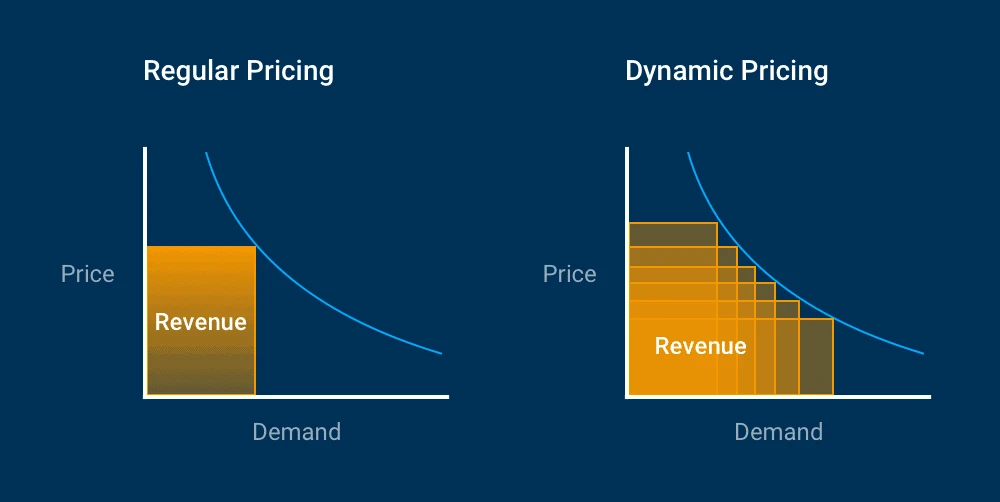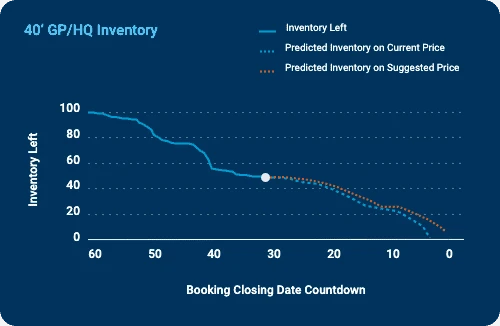
Dynamic pricing is the next evolutionary step for ocean carriers to increase profitability. As a FreighTech tool, dynamic pricing is part of a series of digitally innovative technologies reshaping the shipping industry landscape.
Maersk’s Q2 results showcased their online spot platform (with dynamic pricing) as an effective tool to enhance revenue management. This tool accounted for an astonishing 41% of their spot rate cargo and helped Maersk triple their Q2 profits despite a decline in volumes due to the COVID-19 pandemic.
These figures demonstrate that the industry is changing rapidly, and ocean carrier E-commerce deployments play a major role in maximizing profitability.
“The digital change in the industry has been massively accelerated and anyone not ‘on the train’ at this point needs to play catch-up real quick.”
CEO of Sea-Intelligence Maritime Consulting, Lars Jensen Maersk instant quote usage nearing half of spot bookings, JOC, August 19, 2020
Part of catching up is being able to implement dynamic pricing, and we’re here to explain what it is and how to adopt it.
Dynamic pricing is a type of revenue management that automatically sets spot pricing depending on supply and demand as market forces change and develop.
Factors that affect spot rates in ocean shipping include factors that shape supply and demand like peak season surcharges, bunker adjustment factors, currency adjustment factors, and many more.
The function of dynamic pricing is to maximize revenue by matching spot rates with customer expectations based on market forces and creating price points as demand changes. Because it allows pricing changes 24/7, dynamic pricing helps to protect the bottom line.
Dynamic Pricing Maximizes Revenues

It’s easy to see how dynamic pricing improves carrier outcomes when compared to static pricing by looking at the following chart. As supply and demand changes, dynamic pricing is able to modify price rapidly to maximize revenues which is visualized as the orange area.
Example of How Dynamic Pricing Works – Airline Industry and Uber
The implementation of dynamic pricing has occurred across many large industries. Here are a few prominent examples.
The airline industry uses dynamic pricing algorithms, driven by AI, to offer ‘personalized fares based on passenger flight history,’ flight class, destination, and travel type.
The ATPCO (Airline Tariff Publishing Company) provides ‘technology, pricing, and data to airlines, travel agencies, and tech companies.’ This technology includes dynamic pricing models that allow continuous dynamic pricing and dynamic pricing within predefined pricing points.
Such automation in pricing allows ATPCO technology users to customize fares for individual customers.
In the automobile industry, Uber utilizes machine learning to predict pricing by using the following measurable factors (according to data root labs):
- Traffic patterns
- Time of day
- Weather forecasts
- Historical data
- Holidays
- Global news
The key takeaway is that industries that have adopted dynamic pricing have been able to react better to changes in supply and demand. Firms adopting dynamic pricing early within those industries have been rewarded with a competitive edge over their competitors along with increases in sales and profit margins.
How Does Dynamic Pricing Work in Ocean Shipping?
At BlueX, we understand the importance of an AI-driven Dynamic Pricing Solution as part of an Ocean Carriers E-commerce solution.
We built a solution that forecasts suggested pricing to ocean carriers based on measurable and predictive factors. Some of these factors include:
- Historical data
- Competitor index
- Inventory levels
- Speed of sales
Real-time Supply-side Input: Container Inventory Levels

In short, BlueX Dynamic Pricing allows ocean carriers to use AI-driven algorithms to generate revenue-maximizing price points as demand changes to help protect the bottom line.
Getting the most out of your spot rates starts with more than just dynamic pricing. It’s about a larger digital transformation, which includes:
- Online booking platforms
- Rate and inventory management
- Business intelligence insights
- Real-time data
We at BlueX created the ready-to-go White-label E-commerce Solution to give ocean carriers the capabilities to manage rates and schedules online, along with actionable business intelligence reports. We are also leading the charge for greater profitability with our revolutionary AI-driven Dynamic Pricing for revenue management.